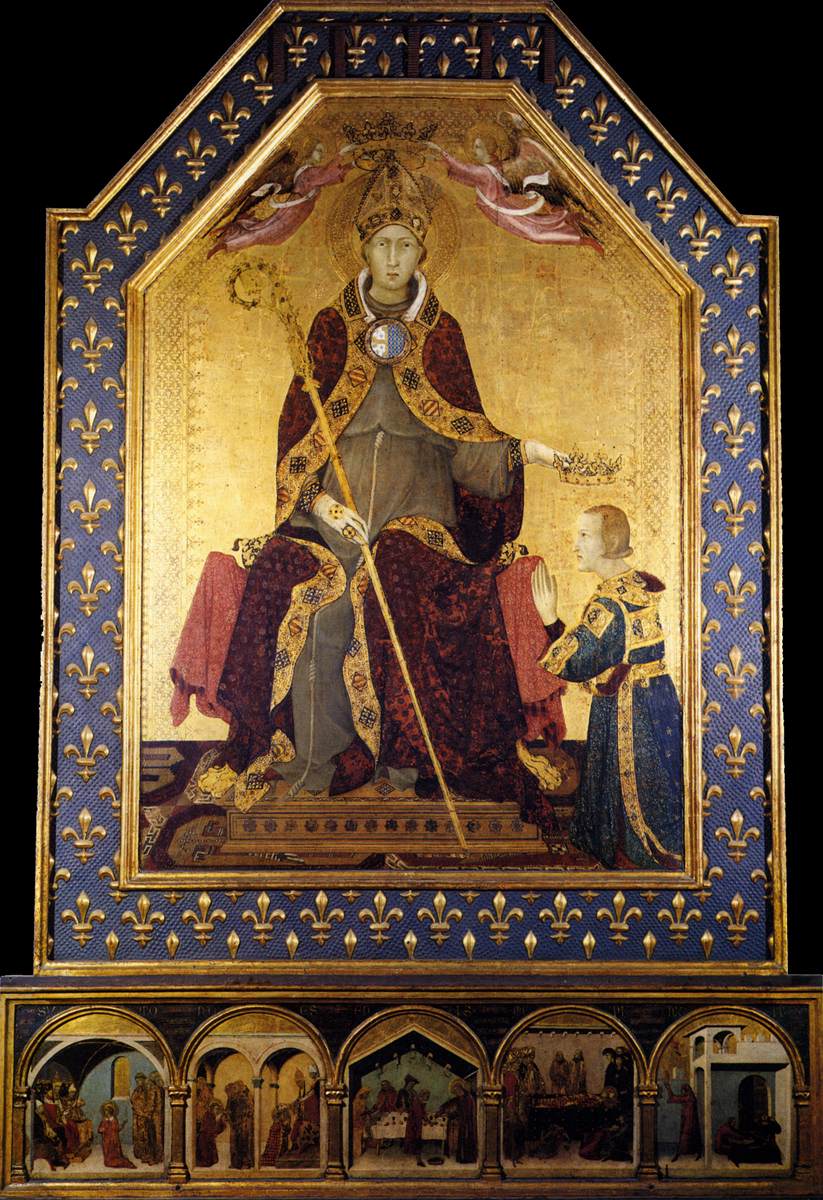
Historical
Oriental Rugs & Carpets
in Medieval European Paintings
Main Page
|
|
St. Louis of Toulouse Crowning Robert of Anjou
c. 1317
Tempera on wood, 200 x 138 cm (without predella)
Museo Nazionale di Capodimonte, Naples
by SIMONE MARTINI (b. 1280/85, Siena, d. 1344, Avignon)

The altarpiece was painted for the Angevin, Robert the Wise, King of Sicily. It represents St Louis of Toulouse seated with his brother, Robert the Wise, kneeling before him. The altar is important for its format. It consists of a large upper panel containing the image of the saint; and a predella beneath containing five small scenes showing episodes taken from his life. This is the first altarpiece to survive intact with an historiated predella. (It was certainly not the first to exist.) Simone's altar marks the beginnng of a process whereby this format gradually became the normal one.
The St Louis altar, being a family monument, is also a good example of court art. The comparatively new demands for facial characterization, up to now associated mainly with sculpture, are here extended to painting in the kneeling figure of Robert the Wise. There is a considerable emphasis on costume, Robert kneeling in what are presumably his coronation robes. Both these and St Louis's cope are liberally covered with family heraldry. This extends to the frame, for the border of the whole panel is carved with "fleur-de-lis". Finally, the whole work was given an added sparkle and glitter by the addition of goldsmith's work to parts of St Louis figure; and also by the addition of stones (probably semi-precious) to such objects as the crowns. These are now lost but such additions were regularly made to royal tomb effigies in the north.